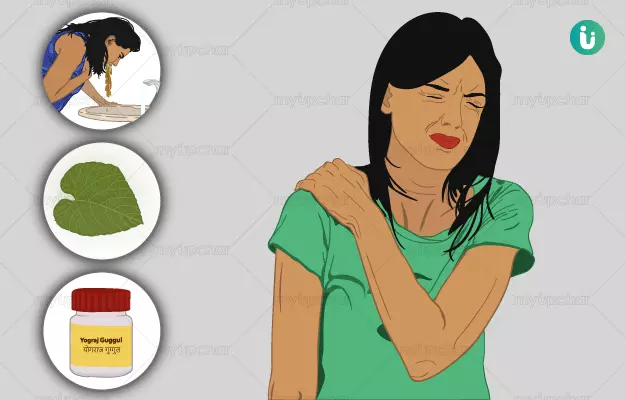Pain, commonly known as shula in Ayurveda, is a symptom that can affect different parts of the body such as the neck, back, pelvis, stomach, chest, nerves, muscles, joints, leg, foot, knee and head. Pain that affects the entire body is referred to as angamarda in Ayurveda. Common causes of pain include overexertion, sprains, and fractures. It may also occur due to underlying conditions like gouty arthritis, rheumatoid arthritis, osteoarthritis, sciatica, diabetic neuropathy, trigeminal neuralgia, shingles, and heel spur. Treatment of pain depends on its underlying cause.
Ayurvedic treatments such as snehana (oleation), swedana (sudation or sweat therapy), nasya (nasal insufflation), vamana (medical emesis), virechana (purgation), basti (enema) and raktamokshana (bloodletting) are recommended for the treatment of pain. Some of the herbs and medicines that are useful in the management of pain are eranda (castor), guduchi (heart-leaved moonseed), brihati (bari katheri), meshashringi (gudmar), shallaki (Indian frankincense), simhanada guggulu, yogaraja guggulu, dashmoola kashaya, bruhadvatachintamaṇi rasa and laksha guggulu.





































